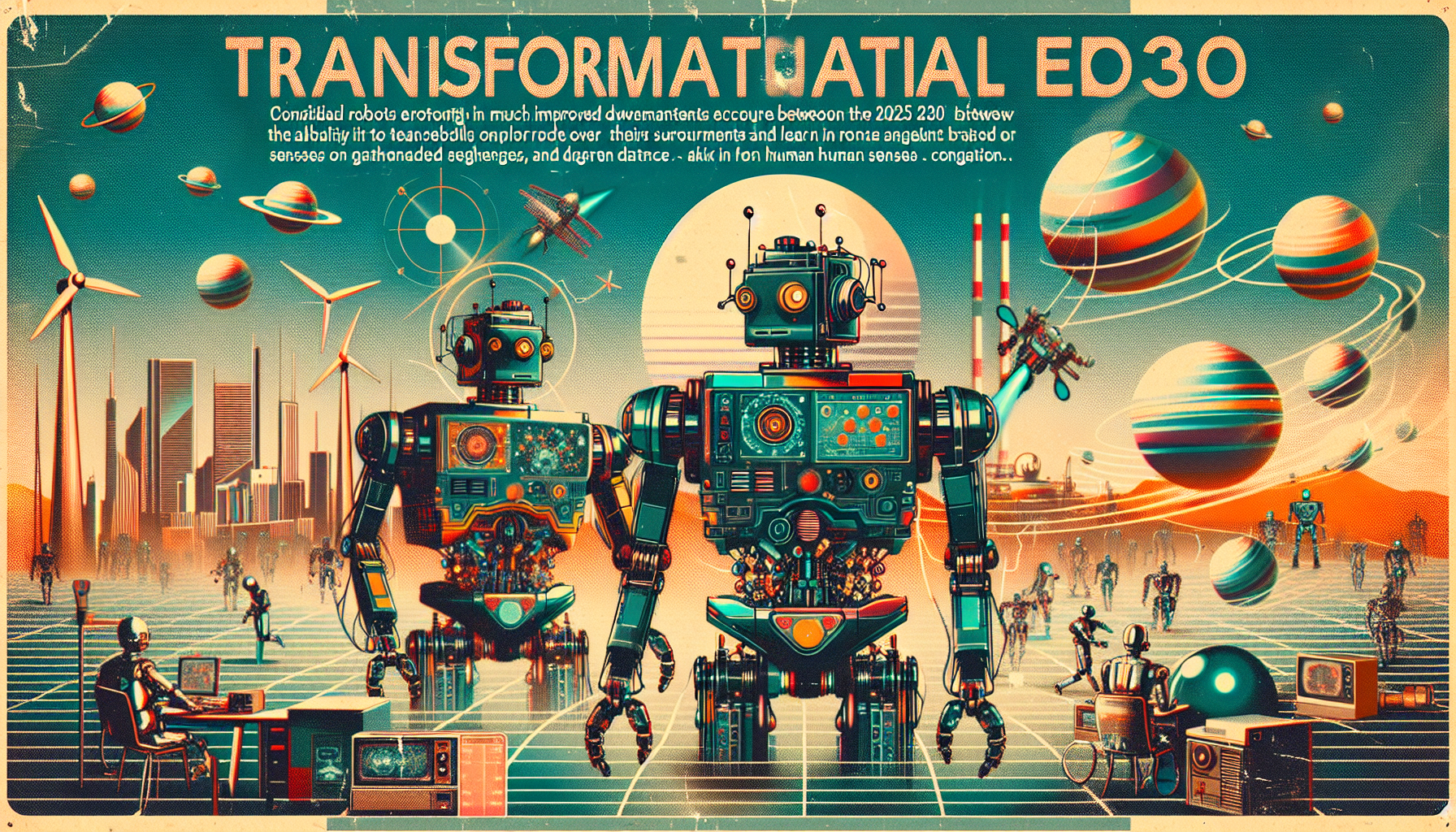The world of robotics is on the brink of a transformative era that’s being compared to the breakthrough of ChatGPT in artificial intelligence. Between 2025 and 2030, the robotics sector is set to experience remarkable advancements that will forever change our interaction with machines. Expect huge improvements in the way robots control their movements, explore their surroundings, and learn from data much like our own senses and minds allow us to do.
Humanoid Robots Take Center Stage
Pioneering companies such as Unitree are leading this revolution. Known for their innovative robot dogs, Unitree is now shifting its focus to humanoid robots. By 2026, the company anticipates delivering significant upgrades in robots’ ability to perceive, comprehend, and execute tasks. Such advancements promise to open up new commercial uses for humanoid robots in just a few years.
Mastering Fine-Motor Skills and Agility
A key factor driving this transformation is the improvement in robots’ fine-motor skills. These enhancements will enable robots to perform delicate tasks with incredible precision. In addition, robots are becoming more agile. For instance, Unitree’s models can already achieve extraordinary feats like triple backflips and recover quickly from disruptions. Such advancements illustrate the remarkable stability and mobility robots are acquiring.
Synthetic Data: The Lifeblood of Robot Training
A pivotal element in this robotic evolution is synthetic data. This data, crafted by sophisticated AI tools, is crucial for training robots more effectively. By providing realistic simulations, synthetic data closes the gap between virtual environments and real-world conditions. This makes the development process more efficient and ensures high performance when robots encounter diverse tasks in the real world.
Enhancing Learning with World Models
Further fueling the advancement of robotics are improved world models and synthetic data training environments. Initiatives like Nvidia’s Cosmos and collaborative projects under the Genesis banner allow for accelerated robot training using this synthetic input. Robots can now learn faster and adapt their behaviors to fit various real-world scenarios comfortably.
Investment in the Future
The drive towards this ‘ChatGPT moment’ includes a surge in funding, especially targeting defense and manufacturing sectors. By embracing robotics to counter labor shortages and boost productivity, the global community anticipates an increase in the use of commercial and industrial robots, aiming for 16.3 million units by 2030. In countries like South Korea, Japan, Germany, and China, the demand for industrial robots is rapidly rising.
A Profound Impact on Industry and Society
The next generation of agile and intelligent humanoid robots will make a significant societal imprint. In manufacturing, robots are increasingly being used to automate production lines, addressing labor shortfalls while enhancing operational efficiency. The concept of robots managing household chores or participating in assembly lines is gaining ground, hinting at new, revolutionary applications similar to how ChatGPT changed the AI landscape.
In summary, a pivotal moment for robotics is dawning, powered by groundbreaking advances in humanoid robotics, precision in motor skills, enhanced agility, and revolutionary training methods using synthetic data. As innovators like Unitree persist in expanding the realm of robotic possibilities, we stand on the threshold of a dramatic shift in how robots will influence our lives and industries over the coming years. This fresh era of robotics holds the promise of tremendous growth and transformation, benefiting countless facets of society and industry alike.

Leave a Reply